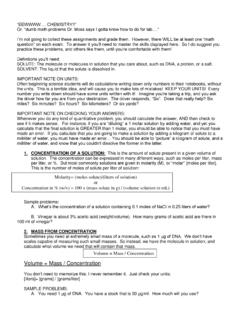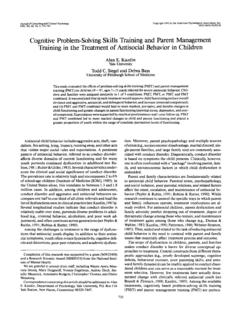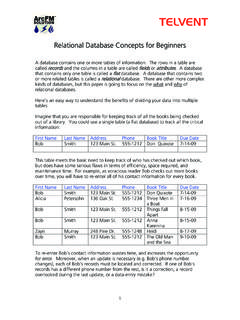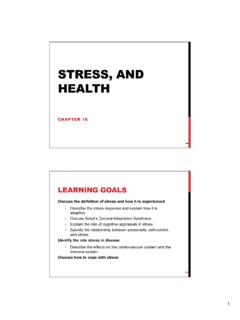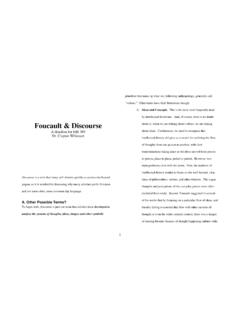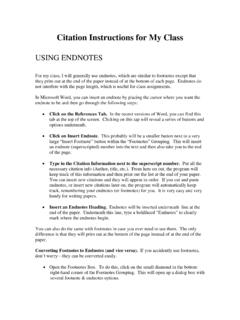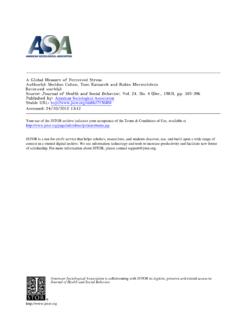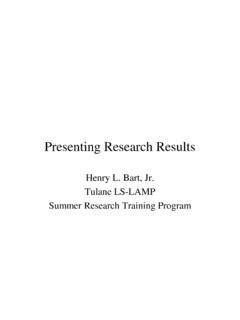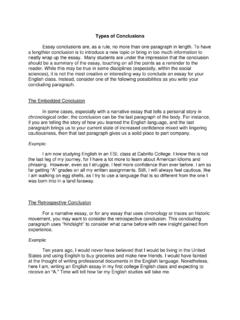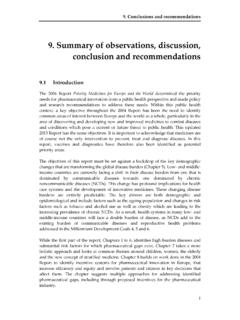Transcription of Writing up results - Wofford College
1 Writing UP RESULTSAPA style guide #2 results section Summary of findings including statistical analyses Report tests in order hypotheses were presented Lead reader through analyses in logical order Best to use same sentence format throughout if uses same statisticResults section Remember: all statistics are italicized Be consistent with # of decimal places for each statistic p-values always go to 2 decimal places Do not write b/c all values less than 1! results that are significant Provide statistic then p-value ( p= .03 ) If p-value on SPSS output says .000 then write as p< .001 results that are non-significant (NOT insignificant!) Provide statistic then p-value ( p= .22 ) Or provide statistic only Or statistic then p= ns Reporting correlations What test is used Report variables being investigated If it is significant or not Sample size (dfor n-1 in parentheses after r ) Value of the correlation Positive or negative sign of correlation Probability level If exact then use = sign, if too small use < sign Direction of test used (1 or 2-tailed) Example: The correlation between IQ and SAT scores was found to be statistically significant, r(30) = +.
2 65, p< .01, two-tailed. If there are too many correlations, report in table (correlation matrix) and discuss overall conclusions. Self-conceptCorrela **.351**. **.. ** **.244*.546**. **.462** **.525**. *.400** *. **.546**.525**.261* Correlat ionSignific ance(2-tailed)NPearson Correlat ionSignific ance(2-tailed)NPearson Correlat ionSignific ance(2-tailed)NPearson Correlat ionSignific ance(2-tailed)NPearson Correlat ionSignific ance(2-tailed)Nself concept : intim aterel ationshipsself concept : friendsself concept : com monsense i ntelli genc eself-concept :ac adem ic intelligenceself-concept : generalself concept :int imaterel ationshipsself concept :friendsself concept :commonsenseint elligenceself-concept :ac adem icint elligenceself-concept :generalCorrelation at (2-t ailed).
3 **. Correlation at (2-t ailed):..*. Self-concept results Correlations were computed among five self-concept scales on data for 80 men. The results suggest that 7 out of 10 correlations were statistically significant and were greater or equal to r(78) = +.35, p< .05, two-tailed. The correlations of competence rating of scholarly knowledge with other self-concept measures were not significant, with the exception of competence rating with common knowledge, r(78) = .40, p< .01. In general, the results suggests that men who are self-confident in one area tend to rate themselves as self-confident in other areas, with the exception of competence ratings for scholarly Memories: Write-up Correlationalanalyses were used to examine the relationship between the ages of younger and older participants first memories and their scores on three psychometric measures.
4 results indicated an inverse relationship between the age of first memories and the scores on the WAIS-R digit-span backwards for younger adults, r(46) = , p< .02, and older adults, r(46) = , p< .02. This suggests that smarter individuals have earlier first & Heckhausen(2001) Examine relationship between perceived control over development (PCD) and subjective well-being (SWB) Study 1: 480 adults 20-90 yrs 4 PCD items 5 strongly agree to 1 strongly disagree: I am able to make my goals come true. My abilities and efforts are significant to my success. 4 Life satisfaction -5 strongly agree to 1 strongly disagree: I am satisfied with my life these days. As I get older, life is better than I thought it would be. 20 Positive and negative affect 5 very often to 1 not at all: How often they felt each of 10 pos (interested, inspired, excited, attentive) or negstates (nervous, guilty, distressed, irritated) Also examined: SES, negative social support , cognitive functioning, health functioningLang & Heckhausen(2001)Lang & Heckhausen(2001) Table 2 shows the correlations perceived control over development was consistently associated with greater life satisfaction, more frequent positive affect, and less frequent negative affect.
5 With one exception, no significant sex differences in the mean-level of perceived control and subjective well-being were observed. Receiving negative social support was associated with reduced positive affect only among young adults but not among old adults. One reason may be that age was associated with experiencing less negative support (r= , p< .01). In summary, perceived control over development was found to be a potent predictor of positive emotional experience and life How to plan your results section Create an outline Sections should follow logical order use section headers Write general introduction to results section The findings of the study are reported in X sections. In the first part, xxxxwill be Write general conclusion to results section In summary, xxx was found to be
